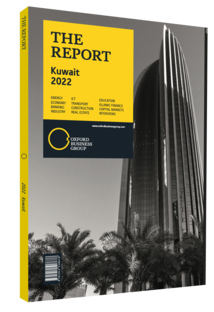Kuwait investing in clean energy projects
To address one of the highest rates of per capita energy consumption globally, the government of Kuwait is taking a multi-pronged approach involving the reduction of subsidies following the rollout of incentives for green energy solutions and national energy efficiency initiatives in 2016-17.
Emir Sheikh Sabah Al Ahmed Al Jaber Al Sabah first announced a target in 2012 to increase domestic energy production from renewable sources to 15% of the total by 2030, at which time overall demand was projected to triple from 2012 levels. As of October 2021 this figure remained under 1%; however, the value of investment in renewables, and the quality and efficiency of utilities infrastructure, has increased, with $353.7m in tenders issued for electricity, water and renewable energy projects in 2021.
Projects & Plans
One project aimed at increasing the contribution of solar to the national energy mix is the Al Shagaya renewable energy park. Opening in 2019 after the commissioning of phase one, the park comprises 10 MW of photovoltaic (PV) solar capacity, a 10-MW wind farm and a 50-MW concentrated solar plant. High temperatures and the level of dust particulates in the air impact the efficiency of traditional PV solar energy production and that of concentrated solar power with molten salt energy storage. However, the Al Shagaya facility has the advantage of being able to deliver power 24/7 through its different components, and both solar and wind will be important contributors to reaching the target of 3.2-GW generation capacity by 2030.
Steps to strengthen water infrastructure are being combined with measures to incorporate renewable energy sources, as illustrated by the Subiya Water Storage Solar PV Plant in Al Jahra. Construction of the plant is expected to begin in 2023 for the commencement of operations in 2025.
Hydrogen also has the potential to contribute to the global energy transition. In February 2022 Mohammed Al Fares, then-minister of oil, announced a blue and green hydrogen pilot project. Research carried out by the non-profit Kuwait Foundation for the Advancement of Sciences suggests that the country has a competitive advantage when it comes to green hydrogen, which remains expensive compared to traditional energy sources. Carbon taxes could help spur growth in the industry’s early phases.
Attracting Investment
In July 2020 the 1.5-GW Al Dabdaba solar plant in the Al Shagaya renewable energy park, which was expected to supply 15% of the petroleum sector’s electricity demands, was cancelled by the Cabinet in light of the Covid-19 pandemic’s associated volatility in oil prices and financial markets. It had also previously faced delays. As greater stability is established in oil prices, financial markets and supply chains post-pandemic, such factors are expected to be mitigated.
There are a variety of hurdles to achieving national renewable energy targets. While the low cost of producing oil and the relatively robust fiscal position of the country reduce immediate pressure to expand renewable energy capacity, studies have suggested that integrating renewables across the economy would incentivise the regulatory adjustments and policy innovations necessary to meet these targets.
Essential steps are already being taken to engage the private sector via a series of strategic public-private partnerships (PPPs). In November 2021 Al Fares announced plans to develop a 2-GW wind and solar project and a 3-GW solar plant at Al Dibdibah through two PPPs. Approximately 7.5 GW of the 14 GW needed over the next 20 years are expected to be developed through PPPs, according to the Kuwait Authority for Partnership Projects. By tapping into PPPs, the government can use private investment to gauge the feasibility and merits of proposed projects. Ultimately, market sounding that allows for private participation serves to improve project outcomes.
You have reached the limit of premium articles you can view for free.
Choose from the options below to purchase print or digital editions of our Reports. You can also purchase a website subscription giving you unlimited access to all of our Reports online for 12 months.
If you have already purchased this Report or have a website subscription, please login to continue.

